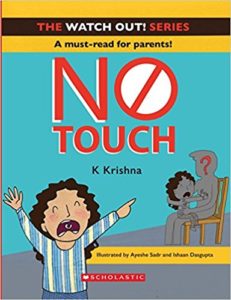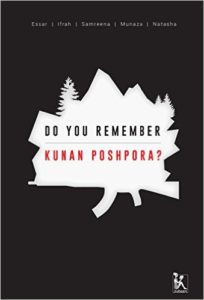“The Cut Out Girl” by Bart van Es
…her memories are not as clear as I have made them. She remembers scraps — the landings, the sirens, the crouching down in the cellar, the girls in their dresss of parachute cloth, the dead bodies of soldiers in the streets of Ede–but some of the rest I must patch together from other sources, such as history books and diaries, and the witness accounts that I will get from other people whom I have yet to meet.
…
Memory is selective and not always reliable. So many facts are irretrievably lost.
Award-winning biography The Cut Out Girl by Bart van Es is about Hesseline de Jong, Lien for short. Lien is a Jew. One of the few Jewish children taken into safekeeping by non-Jewish families and kept hidden from the Nazis and the Dutch police force that were hunting Jews to pack them off to the concentration camps. Bart van Es is a professor of literature at Oxford University and his earlier publications were about Shakespeare and Spenser. Yet, he chose to write about his father’s foster sister, a Jew, looked after by his grandparents during the second world war.
Bart van Es could not understand why Lien had not been invited to his grandmother’s funeral. His grandmother died when Bart was twenty three years old. He was old enough to recall Lien being a part of the family but inexplicably all ties had been severed with her a few years before his grandmother’s death. Bart van Es’s family is based in the UK. They moved to Oxford when Bart was three years old. He became a professor of English Literature at Oxford University but he knew how to speak Dutch. Curious about this severance of ties he chose to begin an investigation on what happened to his father’s foster sister. It was then he realised that his mother had remained in touch with Lien and was able to help him.
The story that is told is astounding. It is probably like many other such stories. Yet the manner in which it is shared with the readers. The mix of oral history testimonies, plenty of archival research and detective work of visiting cities and towns that Lien recalled being taken to as a child and hidden away. The Nazi occupation of the Netherlands was swift and brutal. Astoundingly the extermination of the Jews that was carried out in a methodical manner at the behest of the Nazis was implemented by the Dutch police force and a semi-commercial agency that had been set up specifically to hunt Jews. Horrifically approximately 80% of the Jews living in the country at the time were caught and killed, many sent off to concentration camps. The “success rate” was attributed to the reward given to every person who brought in a Jew. It was approximately seven guilders for every Jew turned in to the authorities. Lien’s own parents were caught two months after they had sent their daughter away to safety. Within a month of their arrest, Lien’s mother and maternal grandmother were killed at Auschwitz while her father died a few months later. Lien, fortunately, became one of the 4,000 Jewish children who had been whisked away to safety. Whatever the immediate circumstance may have been a large band of common people were willing to risk their lives and safeguard these young lives. Some of the extraordinary lengths that the Dutch went to hide Jews are spelled out in the book, including the tunnels dug out under houses that seemingly looked like air passages built ostensibly to ventilate. This was a cover for any unexpected police raids that may occur and they did with great regularity. But if investigated closely the tunnel would lead deeper into the soil where an entire room had been carved out for a family to hide. There were many other kinds of intricate networks created between the Dutch to protect the Jews.
Lien was merely eight years old when her parents handed her over for safekeeping. At first Lien was traumatised and wept bitterly. Her ninth birthday was spent with her foster parents. But within eight months when she had to escape the police raids and was moved from home to home, city to city, it began to become a blur. She was vulnerable. In one of the foster homes she was repeatedly raped by foster father’s brother. Lien was twelve. Possibly the only reason why Bart van Es is able to put together a compellingly told elegant narrative is precisely because Lien maintained a scrap book and retained a few other mementos from the past. Also interviewing her over many days and checking up facts at various museums and archives, speaking to people in the neighbourhoods she recalled staying, the author is able to put together a very elegant but a very disturbing witnessing.
At the best of times, writing about war and its impact on people is a painful exercise. But it is aggravated many times over if it is a story such as this also affects the author and his family. It is impossible to gauge whether it is a biography of Lien or is it a memoir of Bart van Es curious about his grandparents who were saviours to a little girl and would like to know more about the past. The Cut Out Girl comes across as an act of creation of two individuals who began writing the book as complete strangers and a little careful of each other but by the closing pages are thickest of friends. So much so that as Bart is leaving Lien’s apartment to catch his flight home, she chooses to introduce him to her Buddhist circle as her “nephew”.
The Cut Out Girl may come across as an astounding biography that will be talked about for years to come at the incredible luck of a little girl surviving against so many odds. It also marks the arrival of a new style of writing biographies befitting the information age — not the classic style of a literary biography mapping every moment in the protagonist’s life but focussing on significant events in their life. Telling it more in the form of a documentary with plenty of detail but in prose. (It would be short work converting this book into a documentary. The script more or less exists in these pages.) But what truly stands out in this narrative is that during the second world war there were a bunch of individuals who worked relentlessly to save lives, risking their own in the process, but were determined to do so. With The Cut Out Girl what stands out starkly is that even in the most horrifically depressing times of xenophobic violence, intolerance and bigotry, there is hope. It is not absolute bleakness though it may feel so.
The Cut Out Girl won the Costa Book of the Year award in January 2019. Both Bart van Es and Lien were on stage to receive the award. According to the Guardian: ‘Without family you don’t have a story. Now I have a story,’ said Lien de Jong, the 85-year-old woman whose harrowing story is at the heart of Bart van Es’s The Cut Out Girl. ‘Bart has reopened the channels of family,’ she said during the Costa Book of the Year award ceremony. Van Es and Lien de Jong embraced on stage in front of a packed room after he was announced as winner at the awards.
Read The Cut Out Girl.
5 Feb 2019





